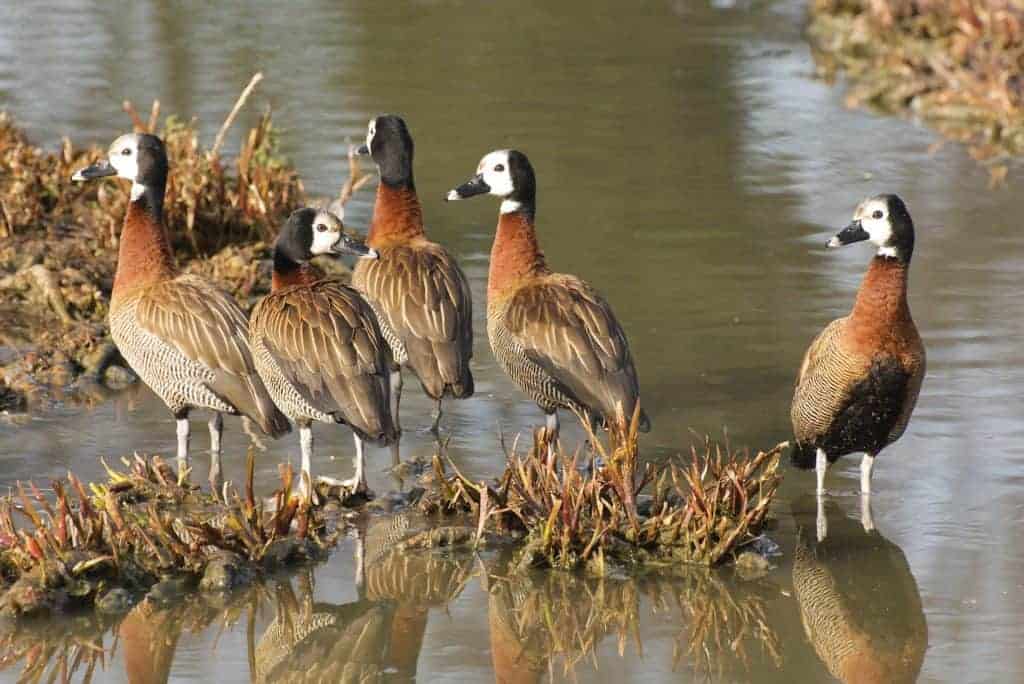White-faced Whistling Duck

In their natural environment of Tropical America and sub-Saharan Africa, White-faced Whistling Ducks occupy a wide range of habitats and are often found in dense flocks. Their preference is for flood plains and large lagoons. Despite their alternative name ‘White-faced Tree Duck’ they rarely perch in trees.
Dendrocygna viduata
To some, these are the most attractive of the whistling duck tribe. Their carriage is very upright and their black nape, white head and rich chestnut breast make a striking contrast.
They are very docile in nature but have a noisy high-pitched whistle. In the wild this is often heard when they night feed.
The White-faced is a highly social member of the whistling ducks and engages in mutual nibbling (allopreening) frequently. This friendship between pairs is particularly obvious when they are separated as they tend to call loudly to each other until reunited. They can also be stimulated to whistle in response to an imitation of their own call, especially if they cannot see where it is coming from!

White-faced Whistling Duck do not breed as prolifically in captivity as other members of the same tribe. Often nesting on the ground or in hollow trees, they lay 8-12 eggs and both parents share incubation for 28 days.
FURTHER READING
Johnsgard, P. A. Ducks, Geese and Swans of the World, Digital Commons@University of Nebraska – Lincoln (2010) Tribe Dendrocygnini.
Share this page